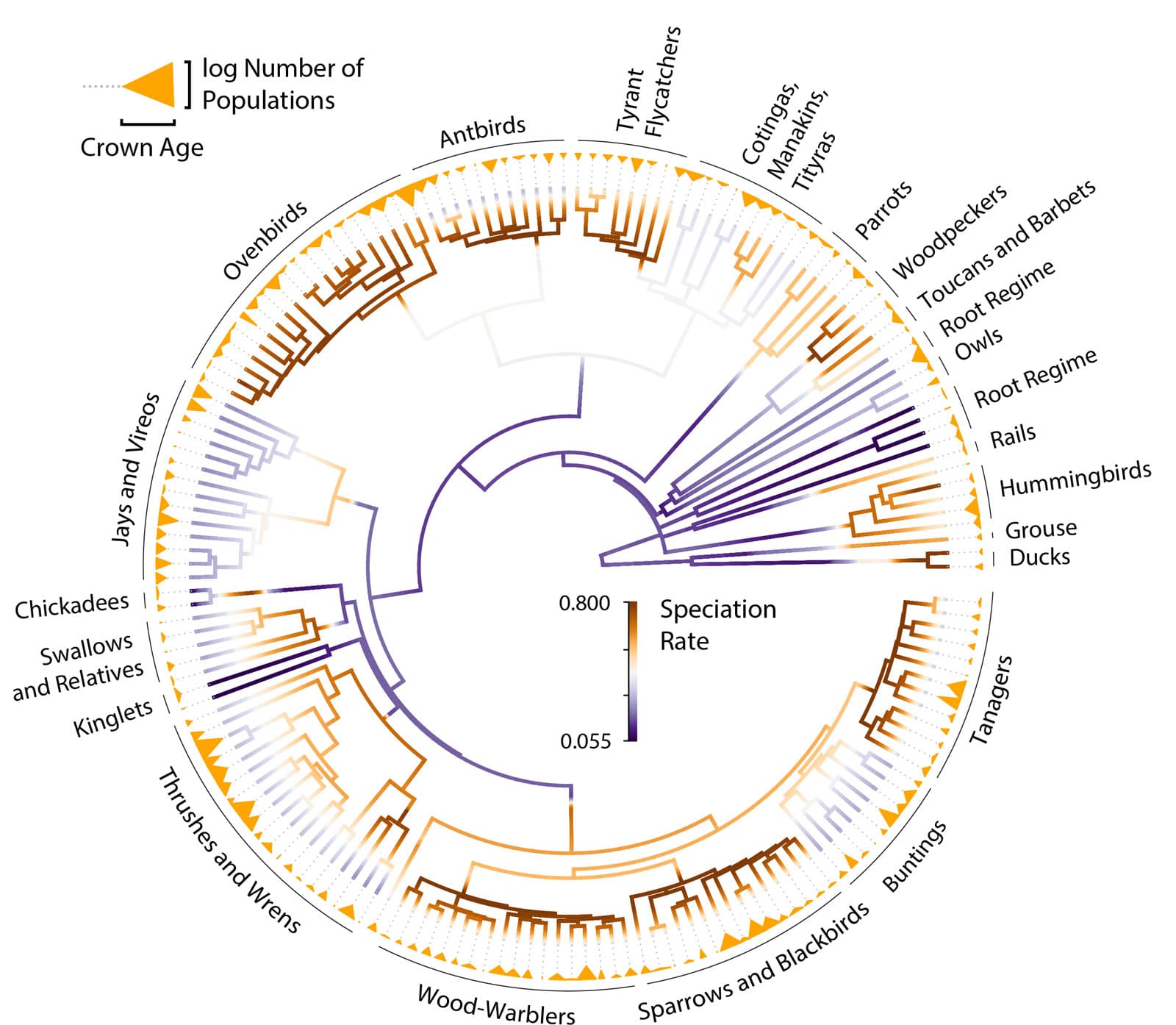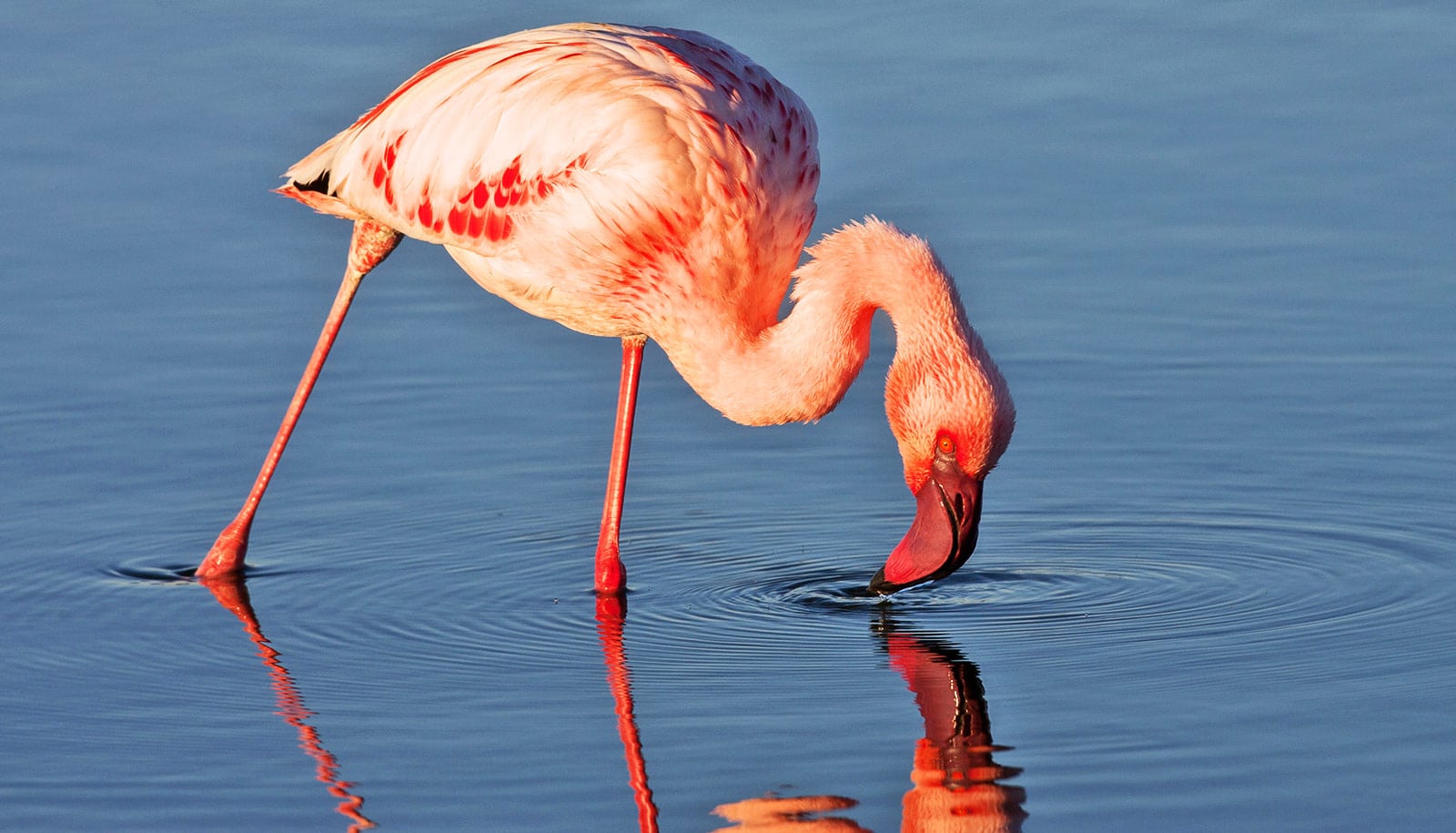New research featuring the genetic sequences from 17,000 individual New World birds in 173 species, sheds light on how new species arise.
An implicit assumption in the discipline of speciation biology is that genetic differences between populations of animals and plants in a given species are important drivers of new species formation and are a key to understanding evolution.
But that assumption has never been rigorously tested, until now, according to evolutionary biologist Michael Harvey, first author of the new paper in the Proceedings of the National Academy of Sciences.
The work demonstrates that species showing faster rates of genetic differentiation between populations are more likely to produce greater numbers of species over long evolutionary timescales.

“Our results are of fundamental significance because there are researchers across the world studying speciation, and many of them investigate genetic differences between populations that are in the process of forming new species,” says Harvey, a postdoctoral fellow in the University of Michigan’s department of ecology and evolutionary biology, in the laboratory of Daniel Rabosky.
“These researchers assume those genetic differences are important for evolution, but this has never been shown in a satisfactory way. We are the first to show that the differences between populations studied by speciation biologists have been fundamental determinants of the formation of the diversity of life.”
New prehistoric bird lived in an Arctic without ice
The researchers measured the rate at which genetic differences accumulated between populations in each of the 173 bird species. They then compared the rate of population differentiation to the probability that each bird species would form new species over time. This probability was based on the evolutionary track record of each species: How many species did its ancestors produce over the history of avian diversity?
They found that the rate of genetic differentiation within species is positively correlated with the rate of new species formation. The two rates were more tightly linked in tropical species than in temperate species.
The study provides the first large-scale test of the link between population differentiation rates and speciation rates. The results confirm the evolutionary importance of population genetic differentiation.
However, genetic differences do not guarantee evolutionary success. Harvey and his colleagues found that the correlation between population genetic differentiation and species formation was imperfect, which suggests that other factors besides differentiation may be important in determining how many new species are produced.
‘Butterbutt’ warbler might really be 3 species
They also found that the emergence of new populations within a species occurs at least three times faster than new species develop, suggesting that most differences between populations will not last long enough to impact species diversity.
“Overall, however, the study confirms the long-held assumption that the genetic differences between populations of a given species might predict its probability of contributing to the diversity of life,” Harvey says.
Other New World birds analyzed in the study include parrots, woodpeckers, toucans, hummingbirds, blackbirds, tanagers, warblers, thrushes, wrens, chickadees, jays, and flycatchers.
Coauthors of the paper are from Louisiana State University, the American Museum of Natural History, and Tulane University.
Source: University of Michigan



